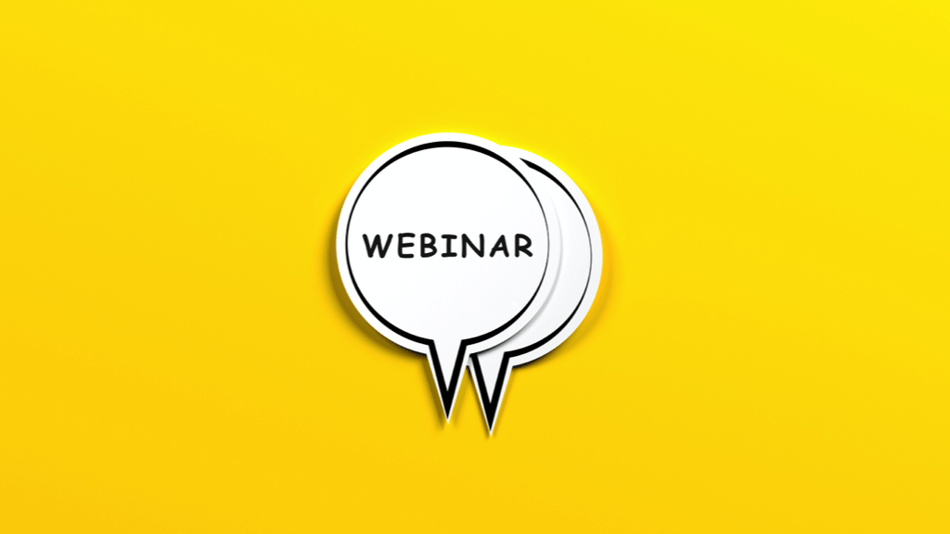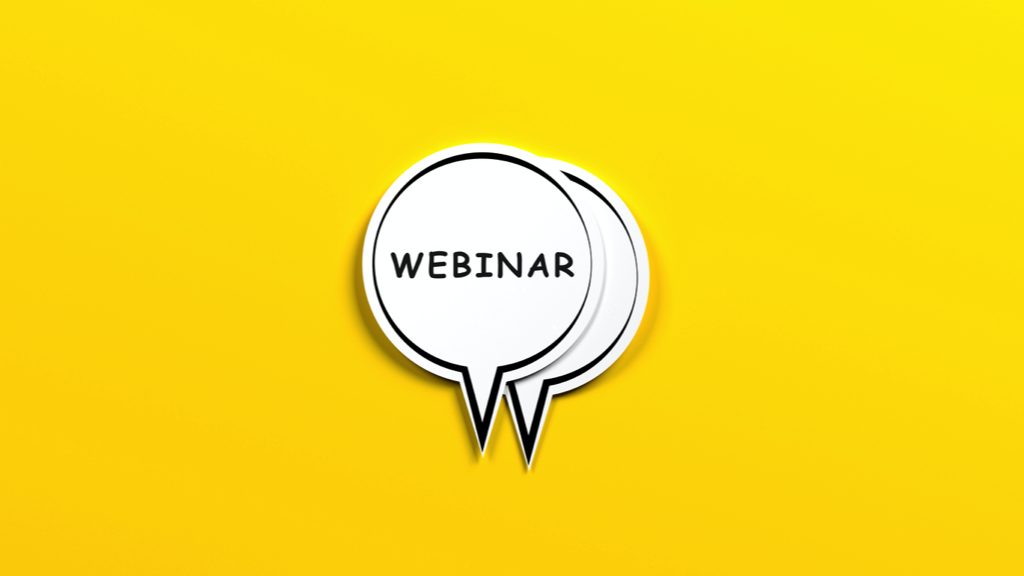Webinars 101: Why They’re Awesome And How To Be Great At Them

More than 65% of business-to-business (B2B) marketers rank webinars as one of their top marketing tools. B2B companies who integrate webinars to their B2B marketing are more successful at bringing in good quality leads.

Here's why:
1. Webinars are online
This means that viewers don’t have to take time out of their schedule to travel which is enticing in the go-go-go corporate world. It also means that there are no geographical boundaries and companies can reach their target audience, even if they are halfway across the world.
Bonus: Webinars are almost always cheaper than live events.
2. Webinars are considered a valuable asset and can be gated
This means that you can collect contact information on the people who register and follow up with them directly as opposed to a smaller content asset, like a blog post, which is not gated.
Bonus: Webinar registration indicates strong interest so you know these individuals really care about what you’re saying.
3. Partner webinars grow your reach
Joint webinars with partners or other industry leaders give you access to a broader audience that you wouldn’t have if you only promoted to your existing contacts. This builds brand awareness and credibility for your company, helping you develop your thought leader reputation.
Bonus: You can grow your email list at the same time, giving you the opportunity to stay in touch.
4. Webinars become a permanent asset on your website
Webinars can be recorded and added to the resources of your website which makes them an everlasting, gated asset. You can use them at any point for your social media or other promotional channels to generate leads. Bonus: with the right use of keywords, page titles and meta descriptions, they are awesome for your website’s SEO!
How do you run a successful webinar?
1. Create content that can’t be ignored
The first step to a successful webinar is creating incredibly useful content for your target audience.
The topic of your webinar should be timely and relevant, useful for their businesses and interesting at the same time.
Make sure to identify and speak to one or more pain points you know your audience is faced with right now and how your presentation helps them solve these problems.
If possible, bring in partners and other industry experts to co-present so that your webinar attendees really get a holistic view of the topic.
2. Pick the right date and time
According to Marketing Tech Blog and ReadyTalk, the best days to host your webinar are Tuesdays and Wednesdays and the best times are 2:00PM EST or 1:00PM EST.
Of course, these days and times are not applicable to everyone around the globe, in all industries. And, if you’ve run webinars in the past and have your own data, you should use that over these averages. However, if you’re new to webinars, these standards are a good place to start for North American companies.
3. Promote your heart out
Because webinars bring in such high quality leads, you want to make sure you generate lots of buzz and get as many registrants as possible.
Here are a few ways to do that:
a) Offer your registrants something more
Offer your registrants something for signing up. This can be another value-add piece of content like an exclusive whitepaper or report, a chance to try out one of your services for free, a chance to have a one-on-one question and answer session with a presenter, or anything else you think your audience might love.
b) Build a killer landing page
Your landing page (the page where people sign up for your webinar) should be short and sweet but provide enough information to entice your audience.
Consider using visuals like images and videos for increased engagement as well as bulleted lists to ease readability.
Make sure you state the date and time of your event, what the webinar is about, who your speakers are and why they matter, call out who specifically the webinar is for and keep your registration form short.
Tip: Don’t make your registrants jump through hoops to sign up. Try to use a platform (like HubSpot) that integrates with popular webinar software so that your audience only has to click once to get to your landing page and fill in only one form.
c) Emails are the best
According to research done by BrightTalk, email is the best way to drive webinar registrations, representing 35% of all sign ups. That’s more than social media, partner promotions, and banners combined.
At Mezzanine, we typically start promoting webinars 4-6 weeks in advance and send at least 3 emails. The first one is sent to all relevant contacts and the subsequent ones are reminders sent to anyone who hasn’t yet registered. We also make sure any partners or industry experts who are co-presenting with us are promoting via email to maximize our reach.
Tip: We find we get a surge of sign-ups if we send a final reminder email the day before or day of the webinar for last-minute planners.
d) Don’t forget the other promotion channels
There’s a plethora or promotional avenues that can be explored for webinars. Which ones you pick are dependent on where your target audience goes for information. Consider some of the following channels for your webinar - social media, paid advertising, industry publications, influencer blogs, website homepage, press releases. (This is, in no way, a complete list!)
4. Run a smooth webinar
Make sure that you avoid, as much as possible, any technical difficulties that might take place during a webinar:
- Practice, practice, practice
- Make sure you are hard wired into the internet – WiFi doesn’t cut it for webinars because it has a higher risk of falling out
- Use a professional mic so that your audience can hear you clearly
- Have an insider sit in on your webinar to let you know of any issues right away
- Have a helper monitor your chat and questions from the audience in case anyone is reporting issues
- Remember to hit record so you can promote your webinar afterwards
5.Post-webinar musts
Once you’ve successfully completed your webinar, make sure to upload your recording to your website and add the presentation deck and any handouts from the webinar.
Send emails to your webinar attendees, absentees (those who registered but did not attend) and your other contacts with a link to the recording page. Also make sure to promote via social and other channels like SlideShare to maximize exposure. Lastly, review your registrants list and follow up directly with anyone you think would be a high-value prospect with a phone call or customized email.
Though webinars are a significant time investment, B2B companies find they are well worth it.
They play a major role in B2B marketing strategy as they build brand awareness, position the company as a thought leader within the industry and generate high-quality leads.
.png?width=2361&height=488&name=Mezzanine%20Logo_Horiz_RGB_on%20blue%20(1).png)

